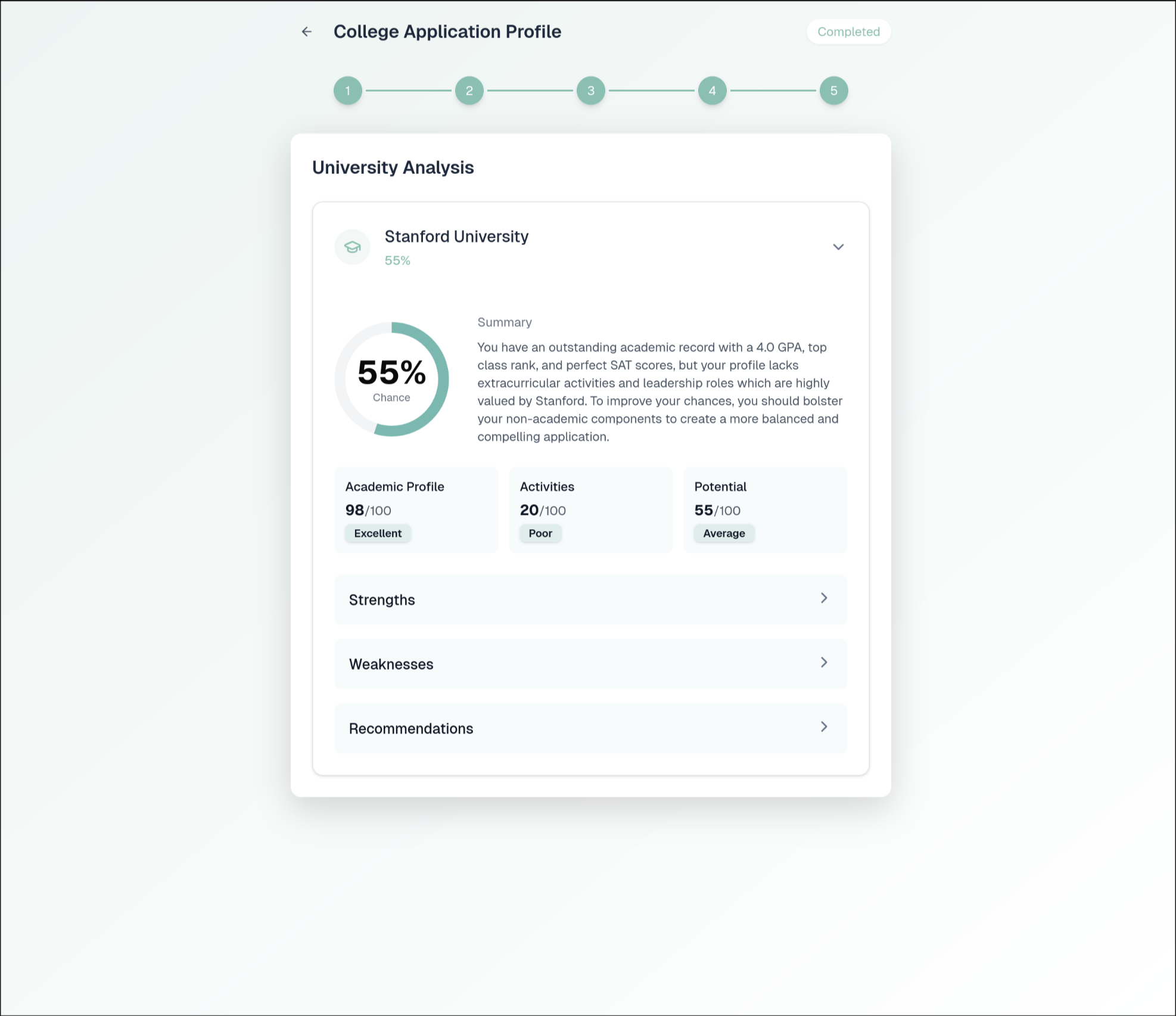
MyChance
MyChance helps high school students discover best-fit universities and understand how to improve their odds—powered by AI that blends quantitative admissions data with qualitative signals like social sentiment.
University Matching
AI-powered matching system that combines quantitative admissions data with qualitative signals
Acceptance Prediction
Advanced algorithms that estimate acceptance chances based on student profiles and historical data
Improvement Roadmap
Clear guidance on how students can improve their odds of admission to target universities
The Story
In Thailand, through a mutual friend, we met a Princeton student who was obsessing over a simple question students and parents ask every year: "Where should I apply—and how can I raise my chances?" We scoped the leanest path to evidence: a two-week proof of concept focused on acceptance-chance estimation using a combination of university data and sentiment signals gathered from public sources.
Our goal was not to "finish a product." It was to prove the core value loop: input student profile → compute relative chances → show that the signal is meaningful enough to spark traction with stakeholders (students, schools, and investors).
The Proof of Concept (2 Weeks)
What we built (and only what mattered):
Acceptance-Chance Engine
Combined university-level quantitative factors with qualitative sentiment to estimate likelihoods.
Minimal Student Intake
Basic profile inputs to run calculations (kept deliberately short to maximize completion).
Simple Output
Clear, interpretable results that made the "chance" concept tangible.
No extra bells and whistles. Just the kernel that could be demoed, challenged, and believed.

Early Impact
Accelerator Acceptance
The PoC was compelling enough to get MyChance into an accelerator.
Investor Interest
The clarity of the problem and tangible results opened doors to early investor interest.
De-risked Direction
The PoC validated that students value both fit and a plan to improve odds, not just a static "yes/no."
As scope broadened and cost realities shifted, Mirajur chose to continue with a classmate from Princeton for the full build. Our work had done its job: turn the idea into a fundable, credible direction.
Key Principles & Lessons Learned
- Focus on Core Value: By concentrating solely on the essential value proposition—predicting acceptance chances—we created a compelling proof of concept in just two weeks.
- Validate Before Building: The PoC approach allowed us to validate market demand and secure accelerator acceptance before investing in a full product build.
- Data-Driven Insights: Combining quantitative university data with qualitative sentiment signals provided more nuanced and valuable predictions than either approach alone.
- Lean Development: By avoiding feature creep and focusing only on what mattered, we delivered maximum impact with minimal resources and time investment.